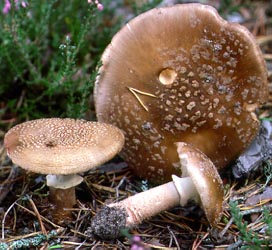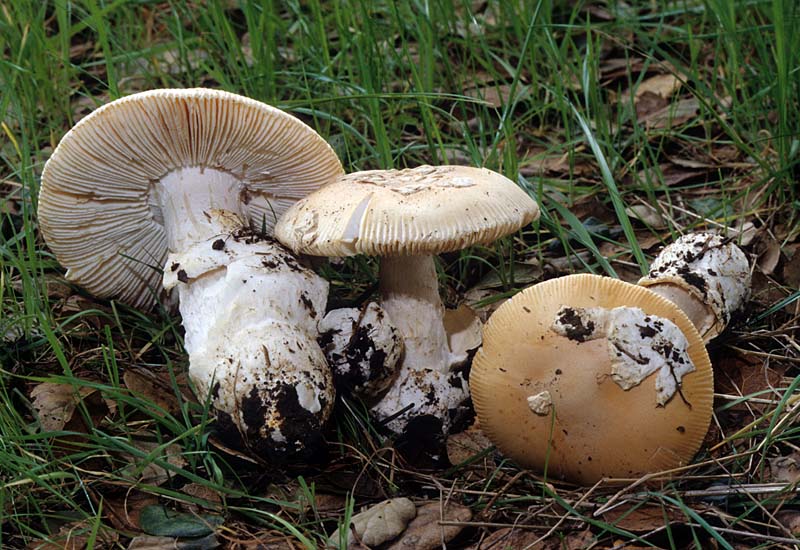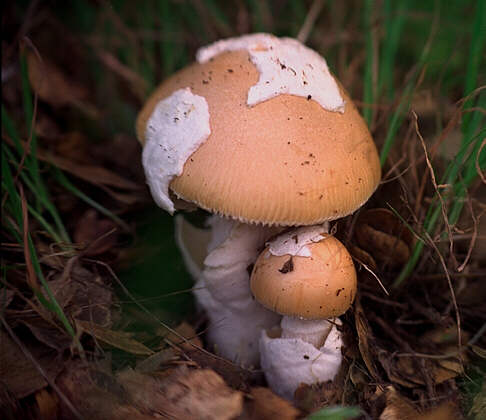Elite life

Mushrooms
Amanita
║ Mushrooms ║
Blusher, Amanite Rougissante, Golmotte (Amanita rubescens)

Cap 5-15 cm across, rosy brown to flesh colour, sometimes with a yellowish flush covered with white or slightly reddish patches. Stem 60-140 x 10-25 mm, white, strongly flushed with cap colour, white above the striate membranous ring, becoming reddish near the bulbous base which occasionally has scattered scaly patches of volva. Flesh white, gradually becoming pink when bruised or exposed to air, especially in the stem. Taste mild at first then faintly acrid, smell not distinctive. Gills free, white, becoming spotted with red where damaged. Spore print white. Spores ovate, amyloid, 8-9 x 5-5.5 μm.
Amanita novinupta

Pileus: Cap 5-14 cm broad, convex, expanding to nearly plane, the margin not striate or obscurely so at maturity; surface moist, smooth, pallid, becoming blotched to unevenly pinkish-buff, darkening slightly in age; universal veil remnants: white to pinkish-buff warts, scattered or aggregated in a central patch; flesh thick at the disc, thin elsewhere, white, firm, bruising pinkish-buff very slowly; odor indistinct; taste mild.
Lamellae: Gills adnexed, moderately broad, close, milky-white, pallid in age.
Stipe 6-12 cm tall, 1.5-3.5 cm thick, hollow to stuffed in age; equal to tapered to a slightly enlarged base, or with a small bulb; surface white, dry, finely striate at the apex, with pale pinkish-brown squamules below, the volva, one to several scaly rings or collars at the base; partial veil membranous, thin, white, the upper surface striate, the lower surface with flattened cottony scales, forming a fragile, pendulous, superior ring.
Spores 7-8.5 x 5.5-6 μm, broadly elliptical, amyloid; spore print white.
Spring Amanita (Amanita velosa)

Pileus: Cap 5-11 cm broad, ovoid, becoming convex, then nearly plane, margin conspicuously grooved or striate; surface viscid when moist, smooth, pinkish-buff to orange-buff, fading in age to buff-brown, typically partially covered with a cottony white patch; flesh thick, white, not staining.
Lamellae: Gills close, white, sometimes with pinkish tones in age, attachment variable: free to slightly adnate or adnexed.
Stipe 4-11 cm tall, 1.0-2.5 cm thick, equal or tapering to a enlarged base; surface white, smooth to pruinose above, sometimes scaly below, partial veil absent but a velar scar or zone may be present; universal veil forming a membranous, white cup-like volva at the base.
Spores 8.5-12 x 7-11 μm, elliptical, smooth, nonamyloid; spore print white.
║ Mushrooms ║